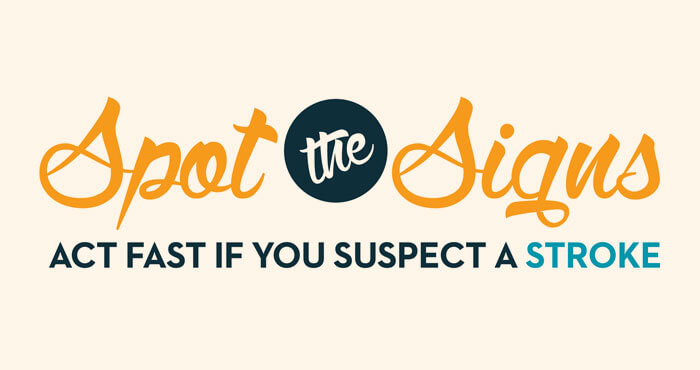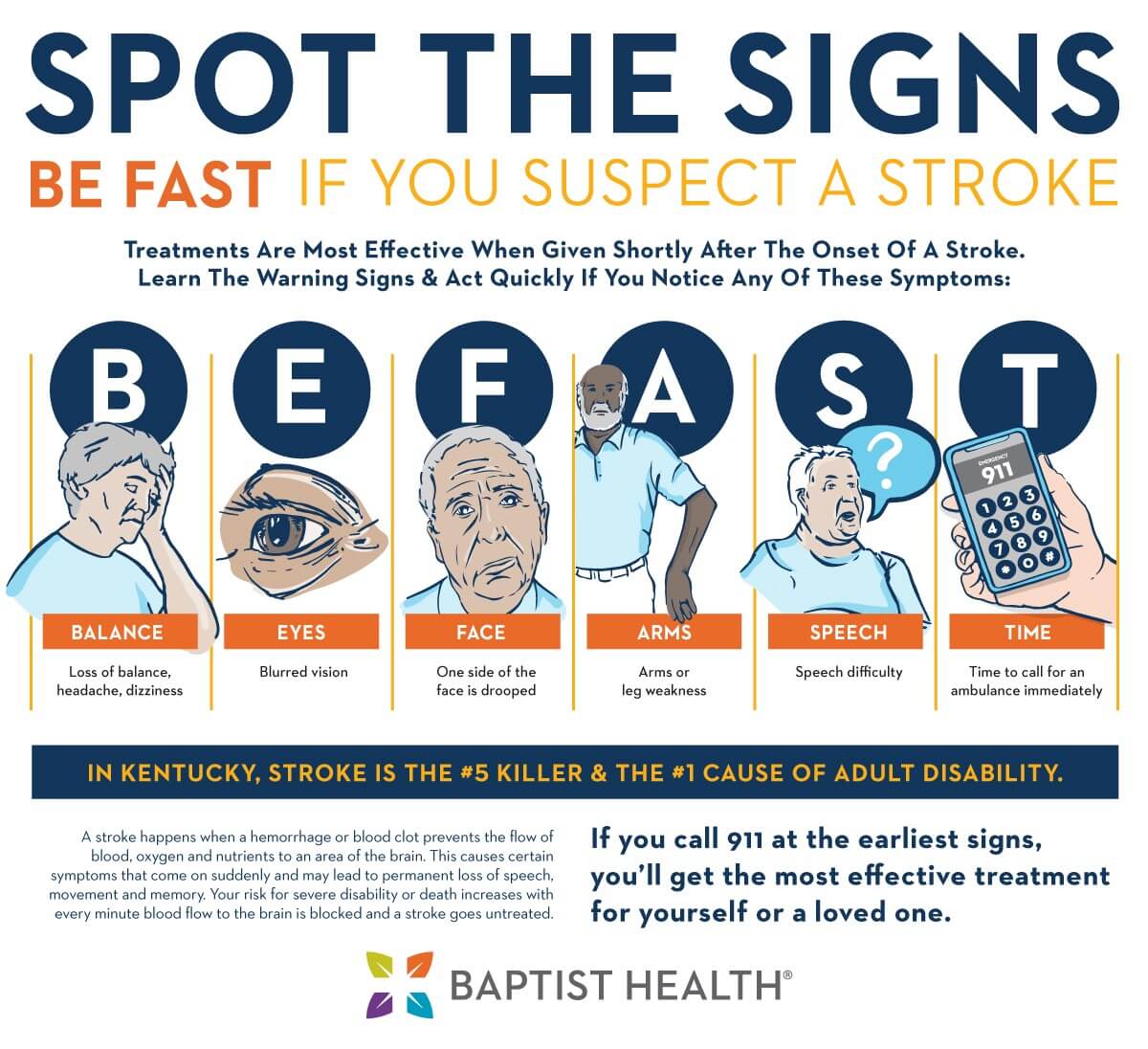How To Spot the Signs of a Stroke

Would You Recognize the Signs and Symptoms of a Stroke?
Knowing the signs and symptoms of stroke with a sense of urgency in your reaction to B.E.F.A.S.T can save lives and prevent disability. The classic signs and symptoms of a stroke are relatively easy to recognize and include sudden weakness on one side of the body, facial droop, or trouble speaking.
Stroke symptoms occur due to the area of restricted blood flow in the brain. Restricted blood flow in the posterior part of the brain can cause less obvious symptoms such as sudden dizziness, issues with balance or trouble walking, and vision changes.
If you spot any of these warning signs of a stroke, call 911 immediately. Arriving at the hospital in an ambulance will ensure the rapid recognition, and treatment of stroke, thus improving outcomes for yourself or a loved one.
Time lost is brain lost! Do not delay calling 911 as a treatment for stroke is time-sensitive.
Be Fast If There Are Signs of Stroke
When you’re looking for the signs of a stroke, there’s a handy acronym that can help you! BE FAST:
- Balance: Loss of balance, headache, or dizziness.
- Eyes: Blurred vision.
- Face: One side of the face is drooped.
- Arms: Arms or leg weakness.
- Speech: Speech difficulty.
- Time: Time to call for an ambulance immediately.

Signs of Stroke in Women and Men
Stroke symptoms can vary between men and women. Men typically experience the BE FAST stroke symptoms outlined above. Women, however, can experience additional symptoms including:
- nausea or vomiting
- seizures
- hiccups
- trouble breathing
- pain
- fainting or loss of consciousness
- general weakness
Signs of Stroke Before it Happens
Being aware of the signs of stroke before it happens is a critical way to prevent serious outcomes. There are indeed different types of strokes. A pre-stroke or Transient Ischemic Attack (TIA) often occur 24 hours to 7 days before a larger stroke. If you think you’ve experienced a pre-stroke or TIA, it’s essential you seek emergency medical treatment right away.
Reduce Your Risk of Stroke
While it’s important to be able to identify the signs of a stroke, it is even more vital to incorporate habits that reduce your risk of having one. The good news is that there are many ways to do this. This includes improving your diet, getting more exercise, quitting tobacco, and addressing hypertension and heart disease with medication if needed.
With stroke being the leading cause of serious, long-term disability, learn how to lower your risk by identifying your risk factors. Start by taking the free assessment and discussing the results with your family and your doctor.


